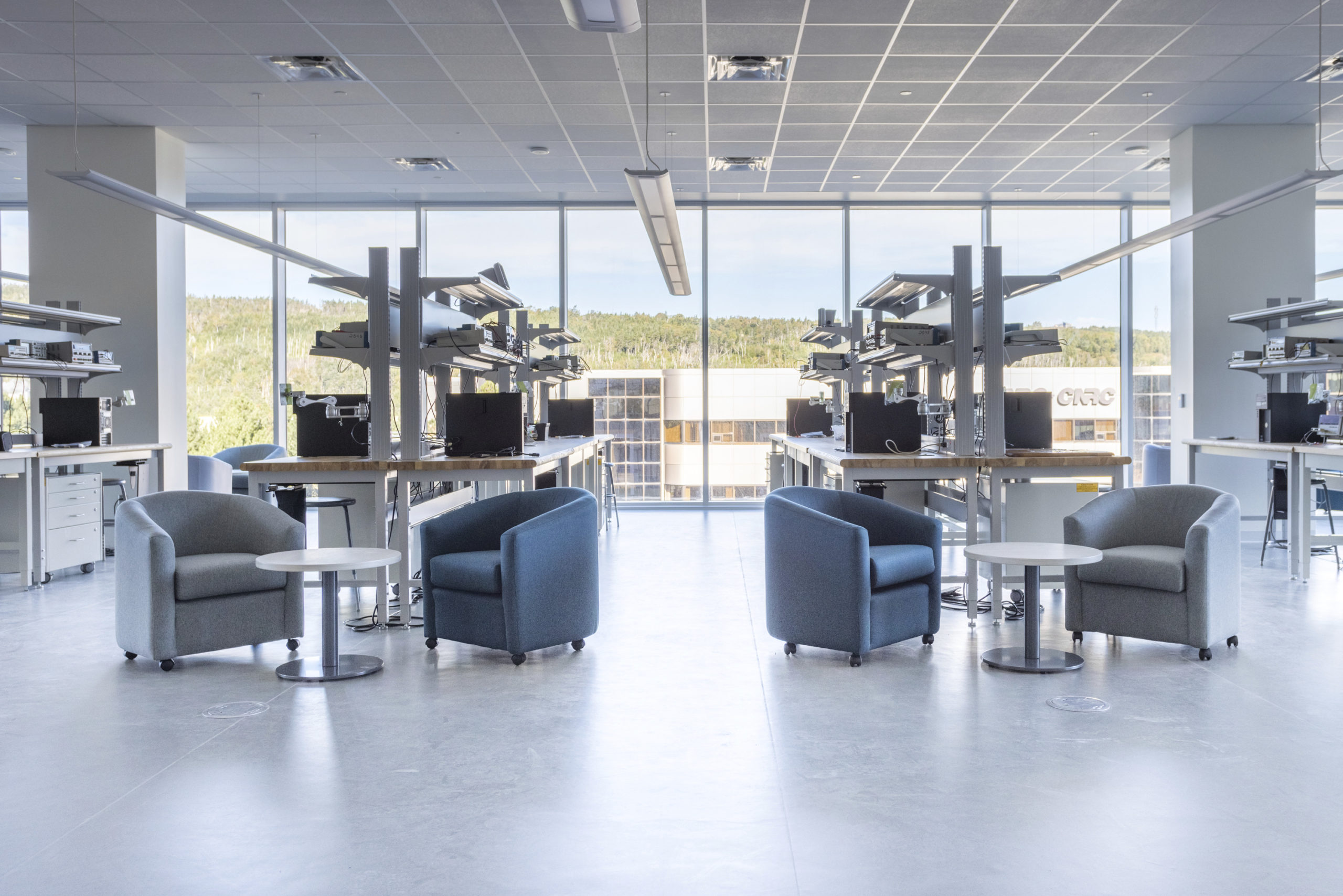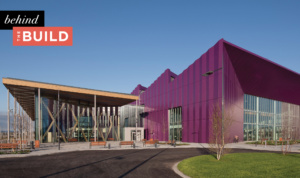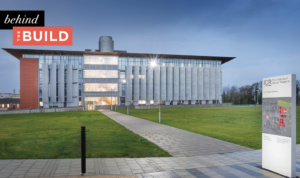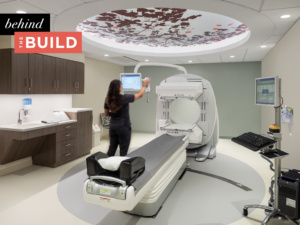Behind the Build: Memorial University of Newfoundland, Core Science Facility
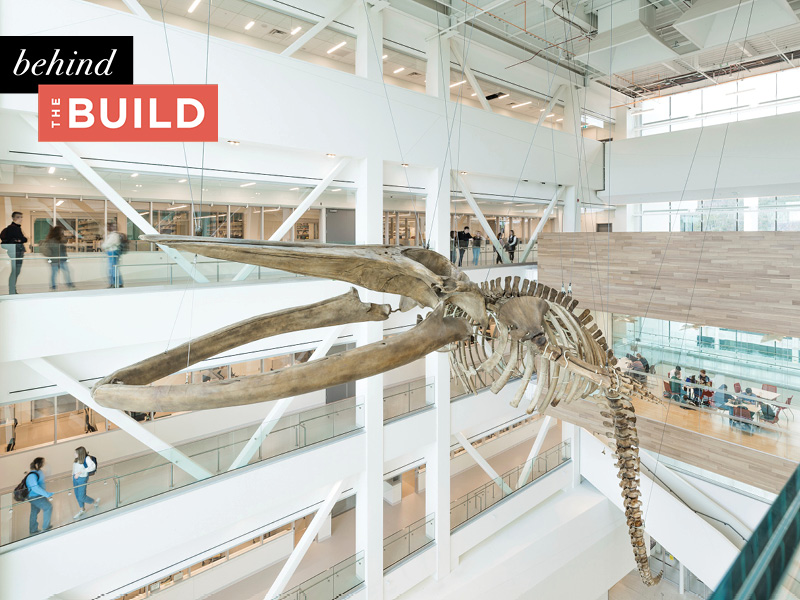
MGAC was founded with the promise to take on the most interesting and challenging project ideas and make them a reality. Getting there is a matter of a million small steps, countless conversations, a multitude of carefully-calibrated decisions that take place between day one and that long-awaited project delivery day. Those are the moments that make a project. We are revisiting them as we delve into the ways our talented, passionate team makes each of our projects possible. Today, we go Behind the Build and revisit our work with the Memorial University of Newfoundland, Core Science Facility.
In 2015, MGAC was enlisted to work on an exciting and ambitious project for the Memorial University of Newfoundland (MUN): a $325M Core Science Facility on MUN’s St. John’s campus. Designed to channel the University’s unique sense of place with its iceberg-inspired structure, house both science and engineering faculty, and attract top-tier faculty and students, the immense opportunity was clear. So, too, were the challenges: the project site was a three-hour flight from our Toronto office and situated on the North Atlantic, one of the most notoriously inhospitable and unexpected weather climates. But we knew our people were ready for it, and immediately got underway plotting how we would make it happen.
THE RIGHT PEOPLE, BACKED BY A DIVERSE FIRM
Given those challenges, it was clear it would require a full-time project manager on-site. We recognized that reality and promptly made arrangements for Senior Project Manager Sam Hakemi and his family to relocate to St. John’s, Newfoundland and Labrador. And he hit the ground running.
Still, even with the perfect team on the ground and planning in place, unexpected challenges are inevitable in our line of work. And indeed, throughout the course of this project, we would encounter everything from a shortage of qualified tradespeople from the jump to the installation of a gargantuan whale skeleton. Our ability to navigate each challenge had everything to do with our people—those in the immediate project team and those who work across different disciplines, sectors, and MGAC offices across North America. Over the years, that talented team and the ability to tap into a wide-ranging collective knowledge base would make this ambitious project possible.
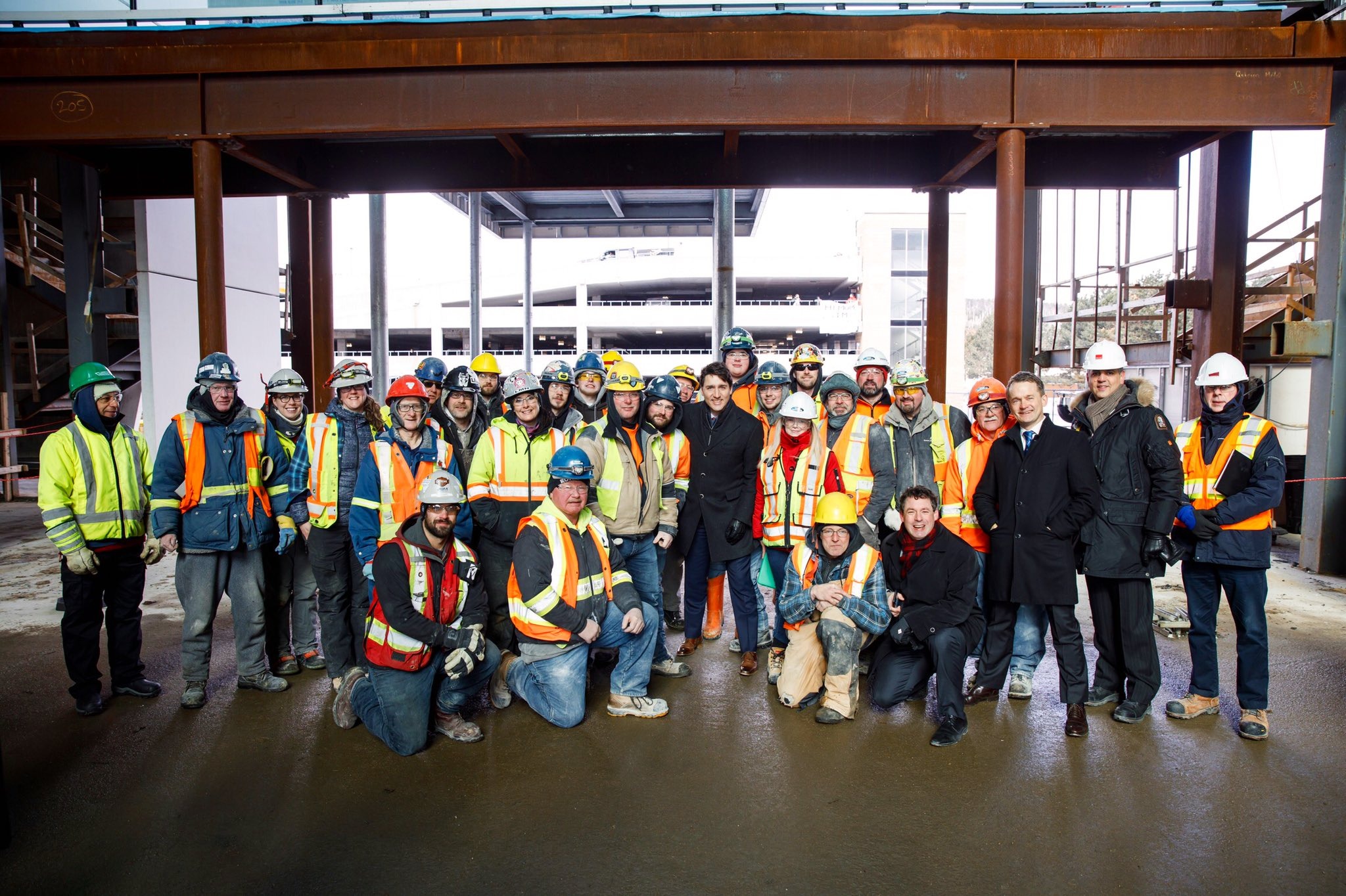
ANYTHING BUT COOKIE-CUTTER
Our first obstacle surfaced before work even got underway. We knew this complex laboratory project would require hyper-specialized workers. After all, putting together a building with two nitrogen plants—amongst many other complicated systems—isn’t exactly your run-of-the-mill construction job. What we didn’t know—but quickly learned—was how scarce the area was with such specialized tradespeople. And, with MUN a public University beholden to strict procurement guidelines, we were unable to seek workers outside the traditional bidding framework. We knew we had to find another way. We needed to revisit the project with fresh eyes to develop the best procurement strategy to initiate the work.
Over a 10-month period, we revisited each and every aspect of the project plan. In deep discussions with our client, we vetted removal recommendations from the architect and engineer. It’s easy to shave the cost of a laboratory project on the surface—cut a nitrogen plant here, reduce the purity level there—but making these decisions without due diligence can result in a project nightmare. Through clear and concise discussion and diligent follow-up with all parties, we established alternative approaches to get work done. This would be the first of many instances where our team, a group of talented professionals that are anything but cookie-cutter in their approach, would write and rewrite the script for project management. That flexibility and willingness to go above and beyond set the tone and the bar for the project.
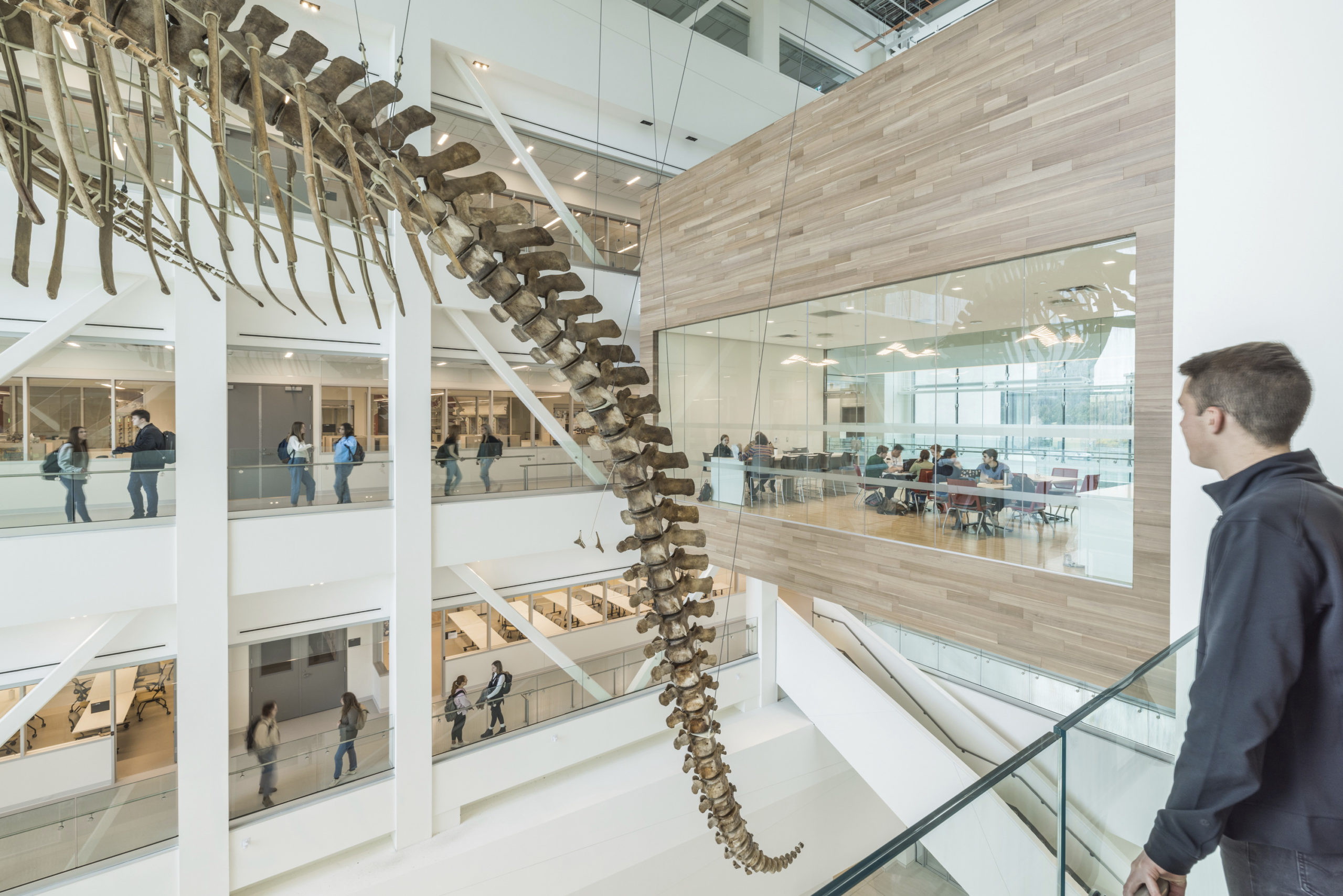
THINKING ONE STEP AHEAD
Those who have followed this project might be familiar with one of its more storied aspects: the inspiring (and impossible to miss) blue whale skeleton that hangs in its atrium. While not part of our original project scope, when the opportunity arose for MUN to procure a blue whale for display in the new Core Science Facility, the team was immediately interested. But how would they transport the massive body of a blue whale 3,000 kilometers, prepare it for installation, and suspend it 100 feet up in the air? They weren’t exactly sure where to begin.
That’s where we stepped in. Recognizing that this task was not so different from the museum installations MGAC’s Cultural team routinely oversees, Hakemi put in a call to his colleagues. Their expert input was the map the project team needed to navigate the necessary steps to follow.
After a three-day road trip across eastern Canada packed in specially-designed containers that expedited its decomposition, the whale arrived. The skeleton then underwent a chemical process to remove remaining collagen which ends up bleaching the bones. From there, the bones were dyed back to their natural coloration—something Hakemi learned about when he enlisted the input of a marine biologist to provide color samples for the skeleton’s accurate hue and recommendations for realistic poses for its display. Now…to get it installed.
With a background in architecture, Hakemi knew this install needed an engineer’s stamp of approval. After all, the structural integrity of a gargantuan skeleton that people pass beneath daily is not something to take lightly. After engaging two engineers, he commissioned a 3D model of the skeleton that detailed precisely where and how rigging lines would be installed—circumnavigating pipes, vents, and support beams. Come install day, assembly was as simple as connecting the dots.
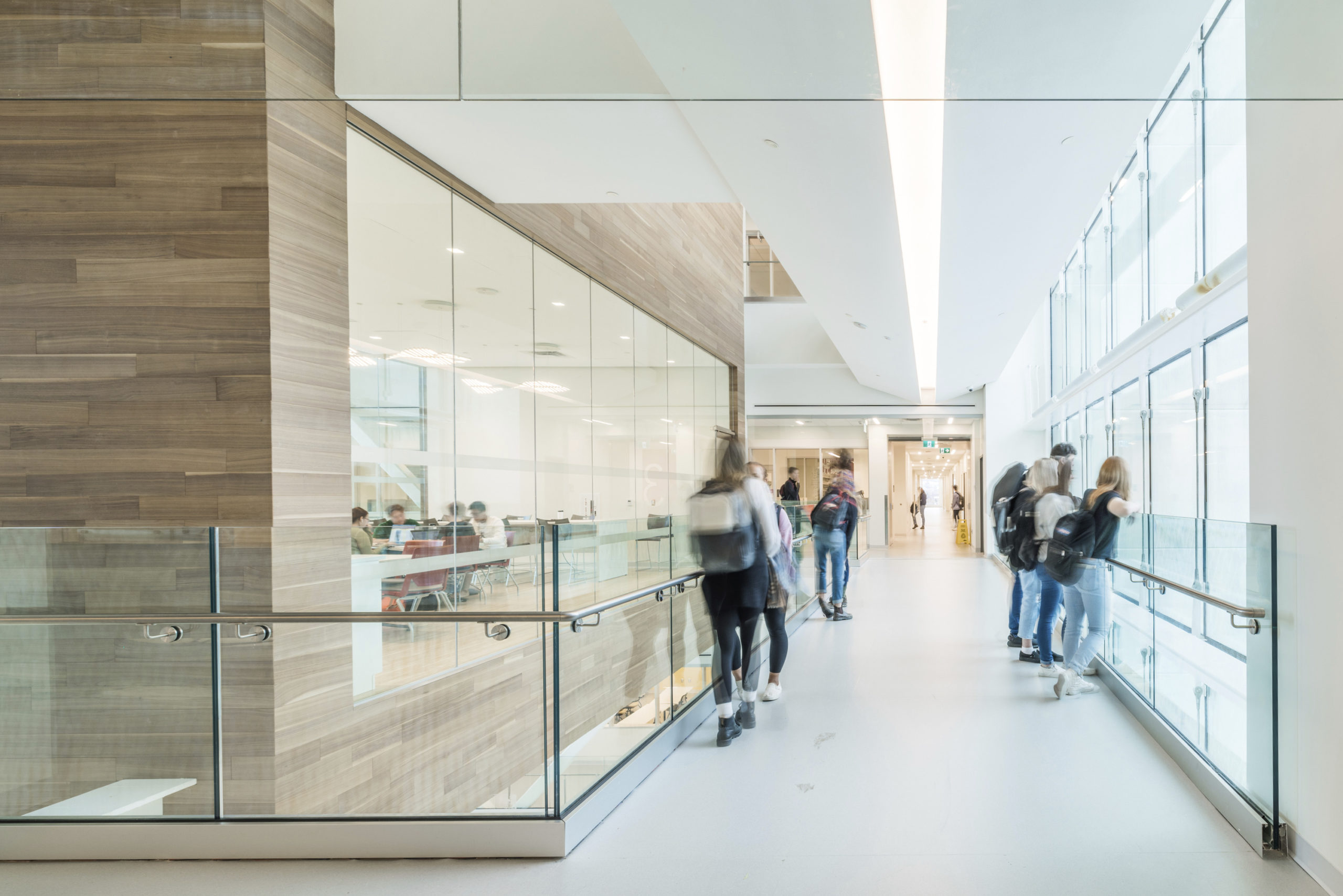
PART PROJECT MANAGER, PART AMBASSADOR
The Core Science Facility was a big project in every sense of the word. At 480,000 SF and with its 200-plus tradespeople on site, it has gone down as one of the largest capital projects ever completed in Newfoundland. Its stakeholder pool, too, was substantial. And that meant we had to get comfortable wearing a lot of hats—all the time. Over the course of a single day, we easily could find ourselves talking to a PhD who heads an academic department, a drywaller, and a member of the executive board. Seamlessly transitioning from one party to the next, with their individualized project lenses and professional vocabularies, can be something of an art.
Other times, we found ourselves in the position of navigating disparate project partner perspectives. Some were based in Toronto and used to working in the hustle and bustle of a big city. Others were local and had their own approach to doing things. We were the glue that negotiated the differences and kept things moving.
Step by step, our ability to act as an ambassador and think outside the box on this project would enable us to develop the strategies and solutions necessary to carry it across the finish line. Today, the Core Science Facility is every bit a state-of-the-art laboratory building and a beacon for student collaboration, learning, and discovery on MUN’s St. John’s campus.
